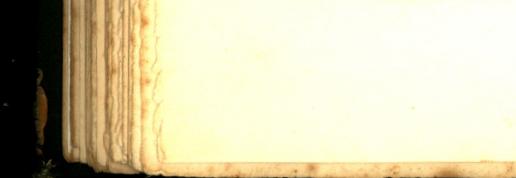46 DOGS AND ALL ABOUT THEM
Before giving the description and standard which have been adopted by the Great Dane Clubs, a few remarks on some of the leading points will be useful. The general characteristic of the Great Dane is a combination of grace and power, and therefore the lightness of the Greyhound, as well as the heaviness of the Mastiff, must be avoided.
The head should be powerful, but at the same time show quality by its nice modelling.
The eyes should be intelligent and vivacious, but not have the hard expression of the terrier. The distance between the eyes is of great importance ; if too wide apart they give the dog a stupid appearance, and if too close he has a treacherous look.
Another very important point is the graceful carriage of the tail. When it is curled over the hack it makes an otherwise handsome dog look mean, and a tail that curls at the end like a corkscrew is also very ugly. In former times " faking " was not infrequently resorted to to correct a faulty tail carriage, but it is easily detected. Great Danes sometimes injure the end of the tail by hitting it against a hard substance, and those with a good carriage of tail are most liable to this because in excitement they slash it about, whereas the faulty position of the tail, curled over the back, insures immunity from harm.
Until recently British Great Dane breeders and exhibitors have paid very little attention to colour, on the principle that, like a good horse, a good Great Dane cannot be a bad colour. The English clubs, however, have now in this particular also adopted the German standard. The orthodox colours are brindle, fawn, blue, black, and harlequin. In the brindle dogs the ground colour should be any shade from light yellow to dark red-yellow on which the brindle appears in darker stripes. The harlequins have on a pure white ground fairly large black patches, which must be of irregular shape, broken up as if they had been torn, and not have rounded outlines. When brindle Great Danes are continuously bred together,
THE GREAT DANE 47
it has been found that they get darker, and that the peculiar " striping " disappears, and in that case the introduction of a good fawn into the strain is advisable. The constant mating of harlequins has the tendency to make the black patches disappear, and the union with a good black Great Dane will prevent the loss of colour.
The following is the official description issued by the Great Dane Club:
General Appearance-The Great Dane is not so heavy or massive as the mastiff, nor should he too nearly approach the Greyhound type. 'Remarkable in size and very muscular, strongly though elegantly built ; the head and neck should be carried high, and the tail in line with the back, or slightly upwards, but not curled over the hind-quarters. Elegance of outline and grace of form are most essential to a Dane ; size is absolutely necessary ; but there must be that alertness of expression and briskness of movement without which the Dane character is lost. He should have a look of dash and daring, of being ready to go anywhere and do anything. Temperament-The Great Dane is good-tempered, affectionate, and faithful to his master, not demonstrative with strangers ; intelligent, courageous, and always alert. His value as a guard is unrivalled. He is easily controlled when well trained, but he may grow savage if confined too much, kept on chain, or ill treated. Height-The minimum height of an adult dog should be 30 ins. ; that of a bitch, 28 ins. Weight-The minimum weight of an adult dog should be 120 ibs. ; that of a bitch, 100 lbs. The greater height and weight to be preferred, provided that quality and proportion are also combined. Head-Taken altogether, the head should give the idea of great length and strength of jaw. The muzzle, or foreface, Is broad, and the skull proportionately narrow, so that the whole head, when viewed from above and in front, has the appearance of equal breadth throughout. Length of Head-The entire length of head varies with the height of the dog, 13 ins, from the tip of the nose to the back of the occiput is a good measurement for a dog of 32 ins, at the shoulder. The length from the end of the nose to the point between the eyes should be about equal, or preferably of greater length than from this point to the back of the occiput. Skull-The skull should be flat rather than domed, and have a slight indentation running up the centre, the occipital peak not prominent. There should be a decided rise or brow over the eyes, but no abrupt stop between them. Face-The face should be chiselled well and foreface long, of equal depth throughout, and well filled in below the eyes with no appearance of being pinched. Muscles of the Cheek-The muscles of the cheeks should be quite flat, with no lumpiness or cheek bumps, the angle of the jaw-bone well defined. Lips-The lips should hang quite square in front, forming a ri t angle with the upper line of foreface. Underline-The underline of the head, viewed in profile, runs almost in a straight line from the corner of the lip to the corner of the jawbone, allowing for the fold of the

